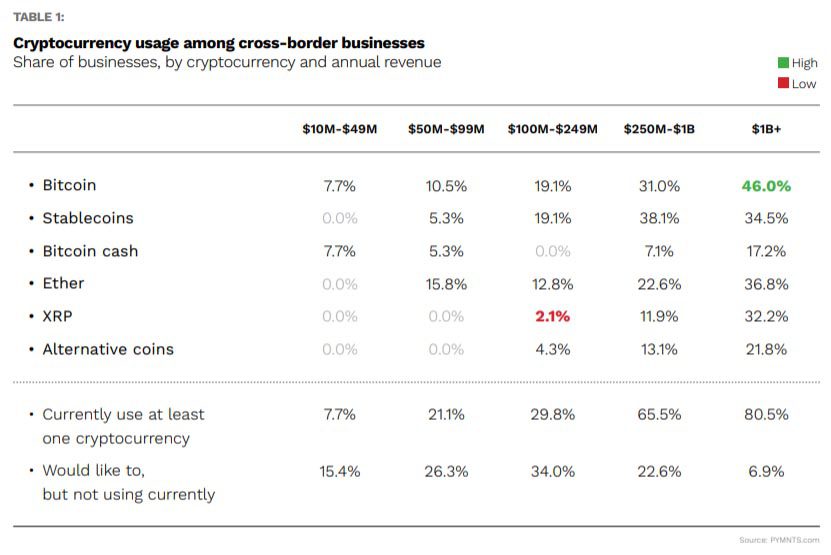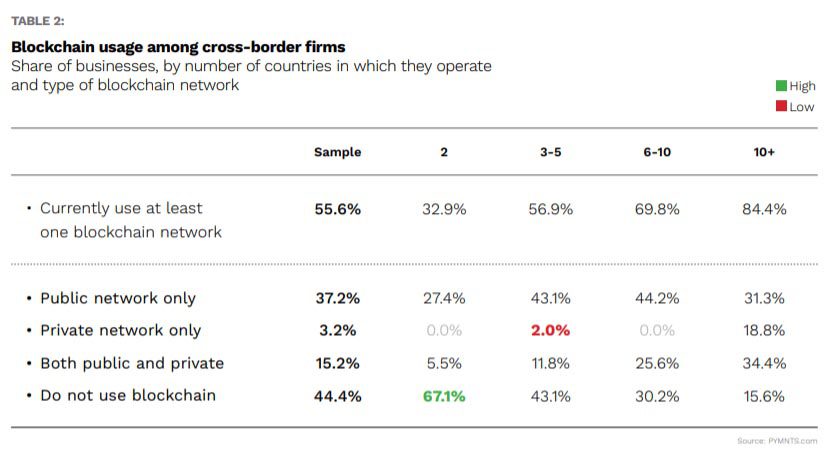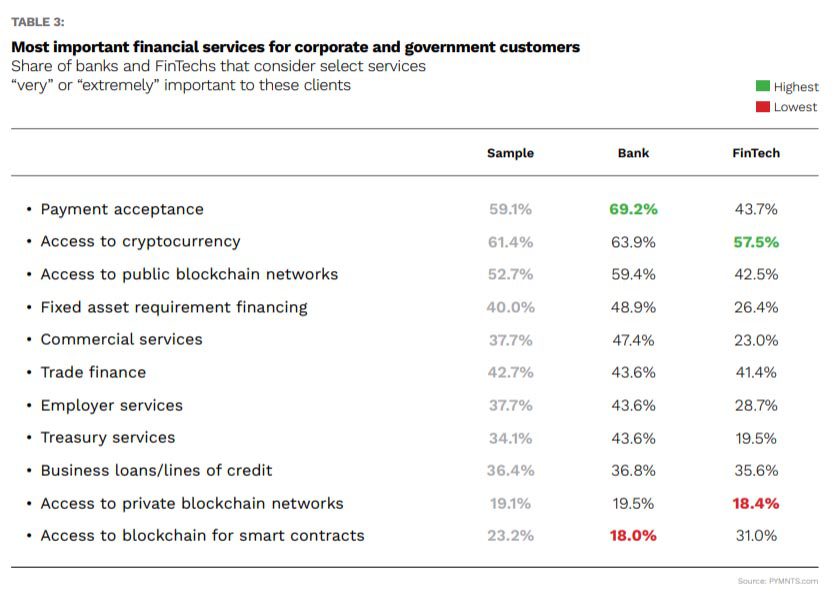Much is made about how cryptocurrencies are changing the very nature of commerce and investing. But while the headlines trumpet bitcoin et al. as (possibly, maybe) becoming an alternative to cash and El Salvador taking giant leaps by accepting bitcoin as legal tender, cryptos have been changing commercial payments too.
In the report, “Cryptocurrency, Blockchain and Cross Border Payments,” done in collaboration between Circle and PYMNTS, surveys of 250 executives revealed that cryptocurrency and blockchain technologies are proving increasingly useful for cross-border businesses. The firms surveyed have at least $10 million in annual sales.
At a high level, cryptos can make cross-border payments a bit more streamlined, more transparent and cost-effective.
Read more: Closing the Gap Between Cross-Border Crypto Demand and Access to Services

As many as 58% of firms use at least one crypto; bitcoin is the most widely used crypto at 31% of those respondents with sales of between $250 million to $1 billion, followed by stablecoins at 29%. Roughly 55% of companies use the blockchain.
And there’s a gap in place where a lagging percentage of financial institutions provide access to cryptos. Overall, only 10.2% of financial institutions (FIs) offer their enterprise clients that access. About 29% of FIs state that concerns over security are barriers to access.

At the same time, 64% of banks state that crypto access is important to their enterprise clients. The most important services for clients include payments acceptance, access to the cryptos themselves and blockchain networks.
PYMNTS noted in the report that there is a strong correlation between the share of firms that use DeFi solutions, using cryptocurrency and/or blockchain for these purposes and the number of countries in which they operate. Sixty-nine percent of businesses that operate in more than 10 countries use smart contracts that trigger payment, as do 61% of those that operate in six to 10 countries.

As to what would incentivize businesses to embrace cryptos more accurately, more than 52% pointed to clarity on regulations.
-Read full report on PYMNTS.com


